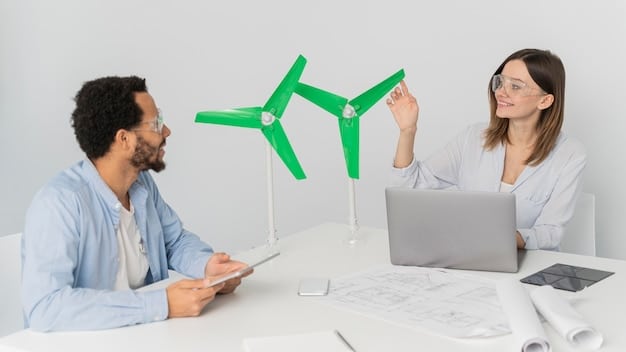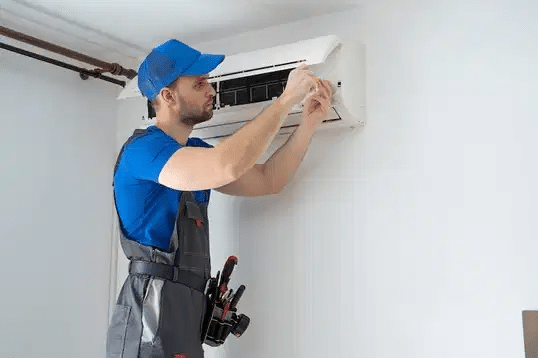In an era where climate consciousness meets rising energy costs, homeowners are increasingly seeking cooling solutions that minimize environmental impact while maintaining comfort. The traditional air conditioning system, while effective, often comes with a hefty carbon footprint and significant utility bills.
Fortunately, technological advancements and renewed interest in traditional cooling methods have created numerous alternatives for the eco-conscious homeowner. From passive design strategies to energy-efficient appliances, this article explores innovative approaches to keeping your home cool while treading lightly on the planet.
Natural Ventilation Strategies
Before the advent of mechanical cooling, homes were designed to maximize airflow. These time-tested ventilation principles remain highly effective today.
Cross ventilation creates air movement by strategically placing windows on opposite walls, allowing breezes to flow through living spaces. This simple technique can make a room feel up to 5°F cooler without consuming any energy.
Stack ventilation utilizes the natural tendency of warm air to rise. By incorporating features like vented skylights or clerestory windows at high points in the home, warm air escapes upward while drawing cooler air in through lower openings. This creates a natural convection current that continuously refreshes indoor air.
For homes with suitable architecture, a whole-house fan installed in a central hallway ceiling can pull air through open windows and exhaust hot air through the attic. This system uses just a fraction of the energy required by air conditioning and works particularly well during cooler evening hours.
Modern ceiling fans without light fixtures present another elegant solution for energy-efficient cooling. These streamlined fixtures move air efficiently without the added bulk of lighting components, creating a wind-chill effect that can make a room feel 4-6°F cooler while using minimal electricity. The simplified design of a ceiling fan without light also makes it easier to install in spaces with limited clearance or in rooms where separate lighting is preferred.
Passive Cooling Design: Working with Nature
The most efficient cooling solution is one that prevents heat accumulation in the first place. Passive cooling design principles work with nature rather than against it, utilizing natural elements to maintain comfortable temperatures.
Strategic landscaping represents one of the simplest yet most effective passive cooling approaches. Deciduous trees planted on the south and west sides of a home provide natural shade during summer months while allowing warming sunlight to penetrate during winter. Studies show that well-placed trees can reduce surrounding air temperatures by up to 9°F, significantly decreasing cooling needs.
Home orientation and window placement also play crucial roles in temperature regulation. In the northern hemisphere, limiting west-facing windows reduces afternoon heat gain, while maximizing north-facing windows provides natural light without excessive heat. Thermal mass elements—such as concrete floors, stone walls, or water features—absorb heat during the day and release it at night, helping to stabilize indoor temperatures.
Evaporative Cooling: An Ancient Technique Reimagined
Evaporative cooling harnesses the temperature-lowering effect of water evaporation—the same principle that cools your skin when perspiration evaporates. This ancient technique has been modernized in several forms suitable for contemporary homes.
Direct evaporative coolers (also called swamp coolers) pass air through water-saturated pads, cooling it before distribution throughout the home. These systems use up to 75% less energy than conventional air conditioning but work best in low-humidity climates.
For homeowners in more humid regions, indirect evaporative coolers offer an alternative. These systems use a heat exchanger to prevent adding moisture to indoor air while still leveraging evaporative cooling principles.
On a smaller scale, personal evaporative coolers can target specific areas of your home without the infrastructure required for whole-house systems. These portable units provide localized cooling where and when you need it most.
Geothermal and Solar Solutions
The earth maintains a relatively constant temperature just a few feet below the surface—cooler than ambient air in summer and warmer in winter. Geothermal heat pump systems capitalize on this phenomenon by circulating fluid through underground pipes to facilitate heat exchange.
Although installation costs are higher than conventional systems, geothermal solutions can reduce cooling costs by 25-50% and typically last twice as long as standard air conditioning units. The environmental benefits are substantial as well, with up to 44% fewer greenhouse gas emissions compared to air-source heat pumps.
Solar cooling represents another promising frontier. Absorption chillers powered by solar thermal collectors use heat rather than mechanical energy to drive the cooling process. While currently more common in commercial applications, these systems are becoming increasingly accessible to residential users, especially in sunny regions.
For homeowners with existing solar panel installations, traditional electric air conditioning powered by solar energy presents a straightforward path to eco-friendly cooling. Pairing air conditioning with battery storage allows excess daytime solar production to power cooling needs during evening hours.
Smart Home Integration for Optimized Efficiency
Even the most environmentally friendly cooling system benefits from intelligent operation. Smart thermostats learn your schedule and preferences, automatically adjusting temperatures to reduce energy use when cooling isn’t needed. Many models provide detailed energy consumption data, helping homeowners identify opportunities for further efficiency improvements.
Zoning systems take this concept further by dividing homes into independently controlled areas. This targeted approach prevents energy waste by cooling only occupied spaces while maintaining comfortable temperatures exactly where needed.
The ceiling fan without light has found new relevance in smart home setups. Modern DC motor fans can be integrated with smart home systems, automatically adjusting speeds based on occupancy and temperature conditions. Without integrated lighting components to complicate wiring and controls, these streamlined fixtures offer simplified installation and programming within comprehensive home automation systems.
Conclusion: Finding Your Cool
Creating an eco-friendly cooling strategy often involves combining multiple approaches tailored to your specific climate, home design, and lifestyle. The ideal solution might incorporate passive design elements, smart technology, and energy-efficient appliances working in concert to maintain comfort while minimizing environmental impact.
As climate change intensifies and energy costs continue to rise, investing in sustainable cooling solutions represents both environmental responsibility and financial wisdom. By embracing innovative approaches to home cooling, eco-conscious homeowners can enjoy comfort without compromise, knowing their choices contribute to a cooler home and a cooler planet.
Whether implementing simple changes like installing ceiling fans or undertaking more substantial renovations to incorporate passive design elements, each step toward sustainable cooling brings benefits for both individual homeowners and our shared environment. The cool home of the future isn’t just about advanced technology—it’s about thoughtful integration of time-tested principles with modern innovation.









One Comment
pin-up: pin up az – pin up